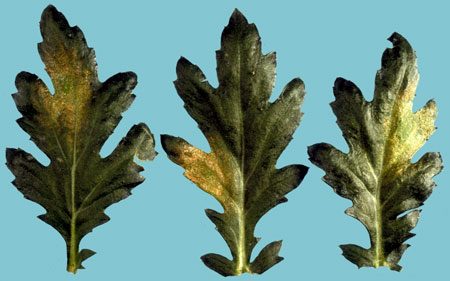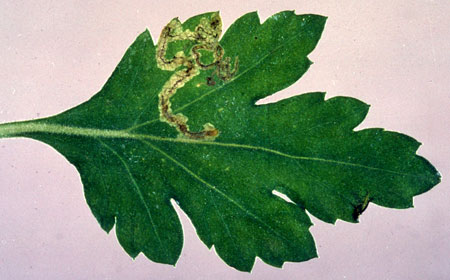Scout garden mums for insect pests to avoid surprises
Greenhouse growers need to recognize a few key pests on garden mums and take action if they are noted. Here’s what to look for and insecticide treatments.
Recent visits to area greenhouses indicate that garden mum production is underway for late summer and fall sales. Each summer, Michigan State University Extension gets reports of some insect outbreak in this crop that is either grown outside or in greenhouses. Here are some insects to scout for and suggested treatments.
Caterpillars
Caterpillars such as cabbage loopers, corn earworms, European corn borers and fall armyworms can be detected in garden mums. Caterpillars can feed on almost all above-ground portions of plants. They consume leaves, stems and flower or terminal buds. The adult females (moths) lay eggs on plant parts. Young larvae emerge from eggs and begin feeding. Caterpillars consume more as they mature until they reach the stage where they are ready to pupate and then turn into adults.
Adults may show up on garden mums when the plants are placed outside. However, I have seen them inside when vents are open and sidewalls are up. Insecticides to be used for caterpillar control include acephate (Orthene), Bacillus thuringiensis (Dipel), bifenthrin (Talstar), cyfluthrin (Decathlon) and fluvalinate (Mavrik).
Thrips
Western flower thrips and eastern flower thrips may both attack garden mums. Thrips feed on leaves and flowers with their rasping, piercing-sucking mouthparts. They cause leaves to have a silvery appearance and they leave black fecal droppings. Thrips can also damage flowers by scarring the petals, deforming flower buds and causing bud abortion. They also vector impatiens necrotic spot virus which slows plant growth and causes the leaves to yellow in patches (Photo 1).

Photo 1. Mums with impatiens necrotic spot virus carried by thrips.
Photo credit: R.K. Jones, North Carolina State University, Bugwood.org
Thrips will feed on the unopened flower and are difficult to control as they hide deep inside the plant during the heat of the day. Good spray coverage is essential for control. Insecticides like Aria, Azaguard, AxatinXL, Mesurol, Orthene 97, Overture, Pedestal, Pylon or Sanmite are recommended by Michigan State University entomologist David Smitley. Heavily infested plants may need four applications five to seven days apart to reduce the infestation to an acceptable level.
Mites
Spider mites, especially two-spotted spider mites, have been noted in mums. They feed primarily on leaf undersides, removing plant sap (chlorophyll) with their stylet-like mouthparts. The feeding damage will cause leaves to have a “stippled” appearance that appears on the leaf upper side. Severe mite damage can cause leaf drop. When numbers are high, they will even make fine webbing on the undersides of leaves.
Two-spotted spider mites are yellow-brown to dark-green with two dark spots on both sides of the body. You will need a hand lens (10-16X) to see them. Mites are a problem under dry and hot weather conditions. Development from egg to adult can occur within 10 to 21 days, depending on temperature – the higher the temperature, the less time it takes to go from egg to adult. Treatments require good coverage to the undersides of the leaves and may need repeat applications three to five days apart in warm weather. Miticides for treatment include Akari, Avid, Floramite, Hexygon, Judo, Kontos, Ovation, ProMite, Pylon, Sanmite, Shuttle-O and Tetrasan.
Leaf miners
Chrysanthemum and serpentine leaf miners are the common species that infest garden mums. Adult females puncture the leaf surface and lay eggs inside the leaf with their ovipositor. The eggs hatch into larvae that tunnel between the upper and lower leaf surfaces, creating white blotches and twisting mines (Photo 2). These mines can disfigure leaves and reduce crop marketability.

Photo 2. Chrysanthemum leaf miner damage.
Photo credit: Central Science Laboratory, Harpenden Archive, British Crown, Bugwood.org
Over the last five years, more growers have reported problems with leaf miners on chrysanthemums. Most likely the problem is due to leaf miner resistance to insecticides. Historically, the most effective products for leaf miners are Avid, Conserve or Citation. However, there have been incidents where leaf miners appear to be resistant to one or more of these insecticides.



 Print
Print Email
Email

